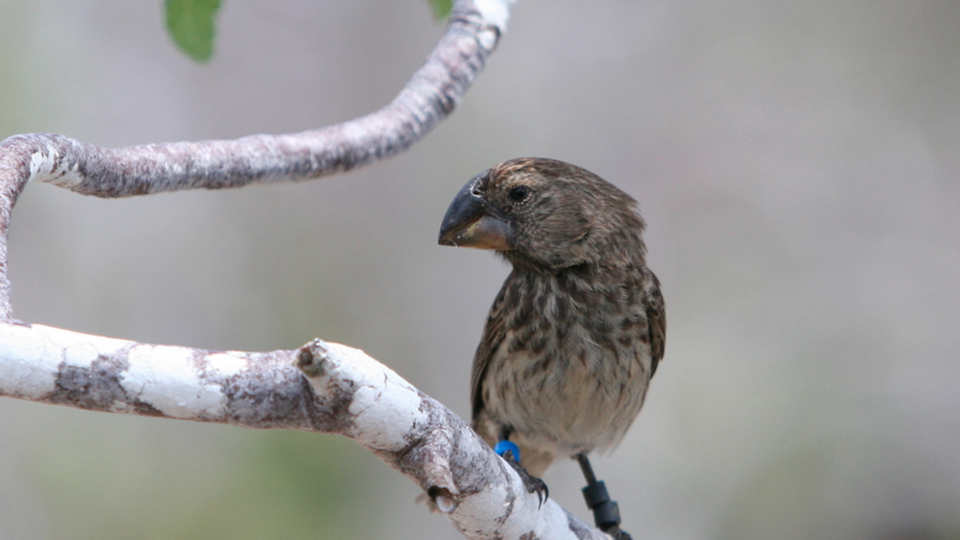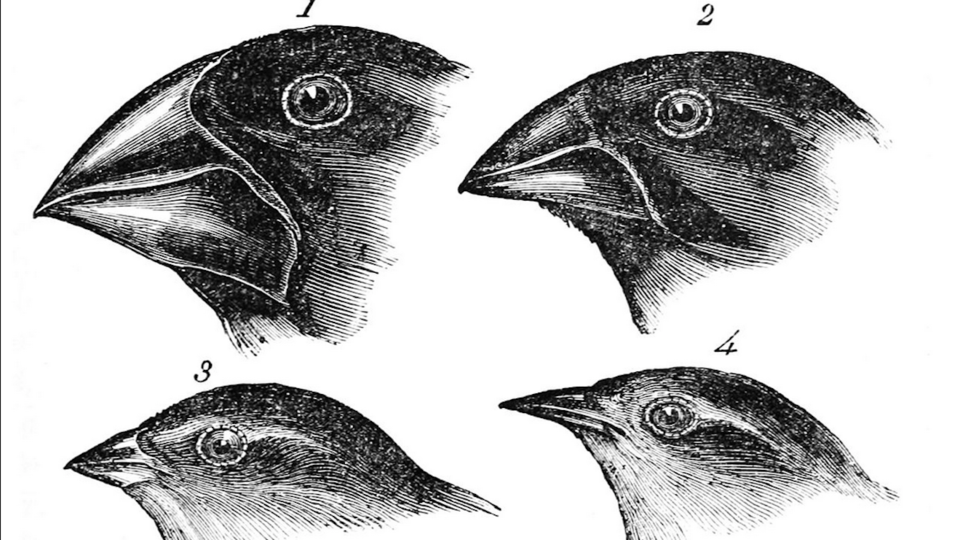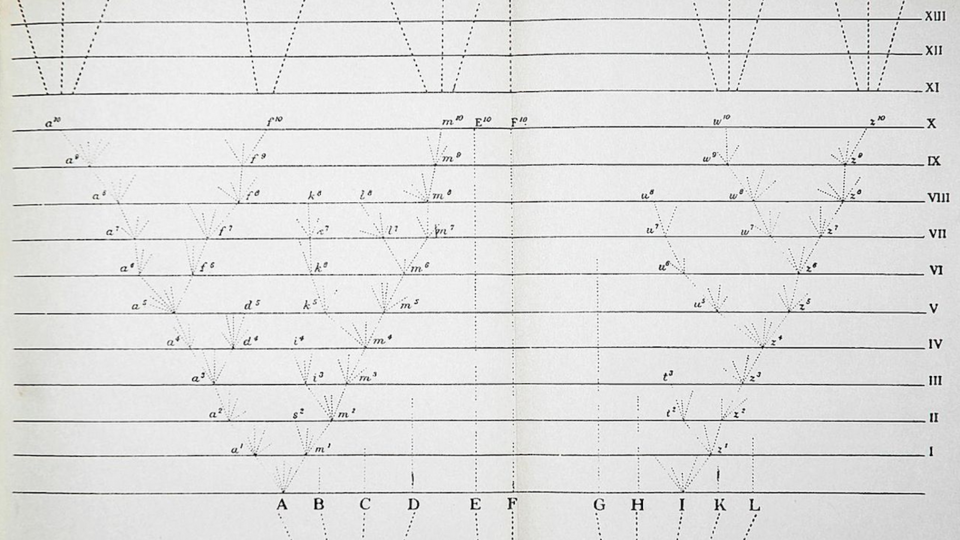Science News
A Birthday Present for Darwin
Happy Birthday, Charles Darwin! To celebrate, let’s talk about those wonderful examples of adaptive radiation,—Darwin’s finches, a.k.a. the Galapagos finches.
Adaptive radiation occurs when one species diversifies into two or more new ones, each specialized to a particular ecological niche. Species are most likely to “radiate” into various forms when new environments open up, and competition is minimal. Darwin illustrated this divergence—this process of new speciation—in a drawing in The Origin of Species.
Darwin collected several of his first finches on his trip to the Galapagos in the 1830s, but it took other experts and further research—including studies done at the Academy in the 1930s and modern DNA-sequencing techniques—to determine the number of species and the relationships between the birds.
The common ancestor to these closely-related finches arrived on the Galapagos Islands from South America about two million years ago. Because the islands were sparsely populated, the finches could take their pick among the variety of environmental niches open on each island—they could specialize! Over time, driven by natural selection (according to Darwin’s theory), the populations evolved into 15 recognized species differing in body size, beak shape, song, and feeding behavior. The diversity of size and form of the current beaks is clear evidence of natural selection in action: each species is adapted particularly well for food from different islands, such us insects, seeds, nectar from cactus flowers, and even blood from iguanas!
And people are still studying these birds today. A study published this week describes the genetic basis of that beak variation, specifically identifying a gene called ALX1, which is strongly related to beak development and how pointed or blunt the beak becomes. The variance in this one gene not only strongly correlates with the beak difference among all 15 species, but it is also associated with the rapid evolutionary change in beak size of the medium ground finch (Geospiza fortis), which faced a sudden change in food supply due to a 1985–86 drought. In a brief span, the ground finch adapted to feeding on seeds that were larger and harder.
“This is a very exciting discovery for us since we have previously shown that beak shape in the medium ground finch has undergone a rapid evolution in response to environmental changes,” says famed Galapagos finch researcher Rosemary Grant, a co-author on the new Nature study.
The ALX1 gene is also related to development of the face and skull in humans, though the specific functions are yet unknown. Perhaps this study could shed some light, says lead author Leif Andersson. “I would not be surprised if it turns out that mutations with minor or minute effects on ALX1 function or expression contribute to the bewildering facial diversity among humans.”
Wouldn’t Darwin be thrilled with these results—a great present for his 206th birthday!
Images: Medium ground finch, P. R. Grant; Large ground finch, B. R. Grant; Darwin finch drawings, John Gould; Darwin's Divergence of Species from The Origin of Species



